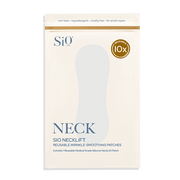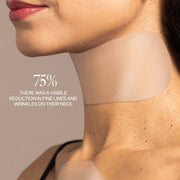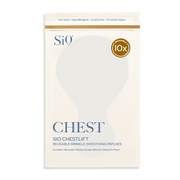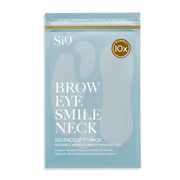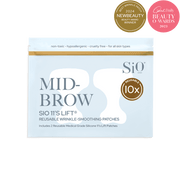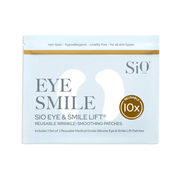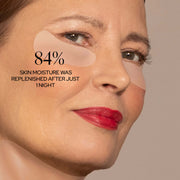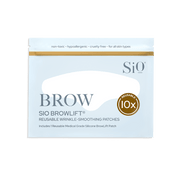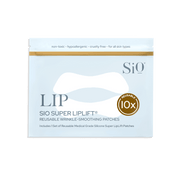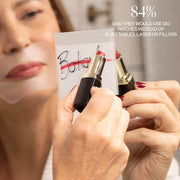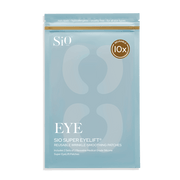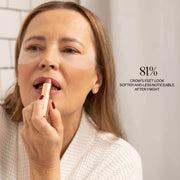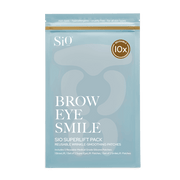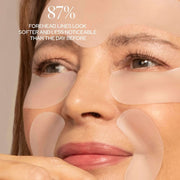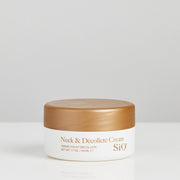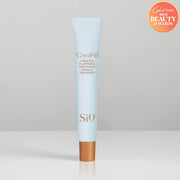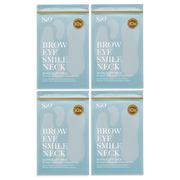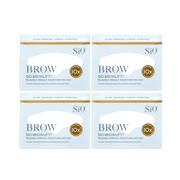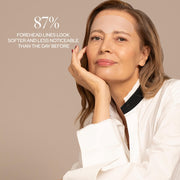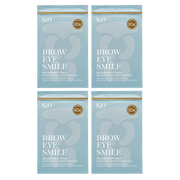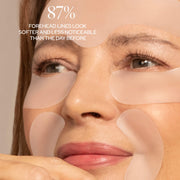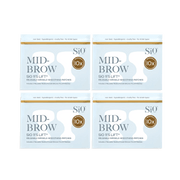13 Ways To Wake Up Your Tired Eyes

You just had an amazing night’s sleep but your eyes still look tired. Why is that? Isn’t a good night’s sleep the ultimate cure for tired eyes?
It turns out that there are a number of factors and causes that lead to tired looking eyes: too much or too little sleep, allergies, spending too much time in front of digital screens, and over-exposure to bright light.

Thankfully, we’ve got you covered with 13 tried and true remedies for under-eye bags. After reading this guide, you’ll know exactly how to get rid of those tired eyes once and for all.
13 WAYS TO WAKE UP YOUR TIRED EYES
Don’t let tired eyes ruin your day! The perfect solution is easier than you think. These 13 ways to wake up your tired eyes will have you looking and feeling refreshed and reinvigorated in no time.
1. FOLLOW A NIGHTLY WRINKLE-FIGHTING REGIMEN
One of the best ways to wake up tired eyes is to wear wrinkle-fighting SiO Beauty Eye & Smile Lift or Super EyeLift patches. It's really simple! All you need to do is apply the patches each night before bed after cleansing and drying your skin.
SiO Beauty patches work while you sleep to hydrate and revive your skin, reducing the appearance of fine lines and wrinkles.

2. SPLASH YOUR EYES WITH WARM & COLD WATER
Waking up your eyes doesn’t have to be an elaborate process. All it takes is 30 seconds and some warm and cold water.
First thing in the morning, splash your closed eyes ten times with warm water. Then switch to cold.
The warm water will open up your pores and pull nourishing blood to the surface. This can help remove toxins in your skin that have accumulated overnight and bring about a youthful glow to your eyes.
The cold water then tightens your skin and closes pores, which prevents dirt and makeup from causing irritation.
3. SUBMERGE YOUR FACE
Splashing your eyes with warm and cold water is the quickest way to reduce saggy, inflamed skin. But if you’ve got just a bit more time, submerging your entire face in cold water is even better.
That’s because the skin around your eyes isn’t separate from the rest of your face. When all the skin on your face is tight, the skin around your eyes will be too.
Submerging your whole face in cold water does that. Here’s how to de-puff those tired eyes:
- Fill a large mixing bowl with cold water
- Hold your breath
- Submerge your face in the bowl of water
- Keep your face submerged for 30 seconds (or until you can’t hold your breath anymore)
- Remove your face from the water
- Catch your breath
- Take a deep breath and submerge your face again
Repeat these steps three times to enjoy eyes that look refreshed and awake.
4. GENTLY MASSAGE THE SKIN AROUND YOUR EYES
Massage is a quick, easy, and effective way to wake up and rejuvenate tired eyes. Gentle massage brings extra blood to your muscles and skin. The extra blood cleans out impurities that collect there overnight.
Gentle massage also helps relax the muscles around your eyes. When your muscles are less tense, your skin will smooth out and appear less swollen.
Oh, and don’t forget that a massage just feels good! That might be reason enough to take a few moments out of your busy schedule to massage the skin around your eyes. Here’s how to do it:
- Place your pointer finger and middle finger in the corners of your eyes (near your nose)
- Gently and briefly press your fingertips into your skin and then release. It should feel like you’re tapping your fingers
- Continue to press and release as you follow the bones underneath your eyes out toward your temples
- When you reach your temples, continue the massage on the skin above your eyelids back toward your nose
- That’s round one
- Repeat steps two and three
- This time when you reach your temples, massage the skin above your eyebrows as you move your fingers back toward your nose
- That’s round two
- Repeat both rounds three more times for a total of eight circles (four above your eyelids and four above your eyebrows)
All four rounds should only take about two minutes. You can perform this massage anytime, anywhere for a relaxing way to wake up tired eyes.
5. PALM YOUR EYES & RELAX
When you begin to feel your eyes getting heavy, take a break and “palm” your eyes.
What does this mean? First, rub your palms together for a few seconds to warm up your skin. Next, place your palms over your eyes. Your fingers should overlap on your forehead.
Finally, take deep breaths, inhaling through your nose for a count of four and exhaling through your mouth for a count of eight.
Hold this position for five rounds of deep breathing. The combination of darkness and warmth from your palms will give your eyes a short — often much needed — break.
The deep breathing also improves circulation and oxygen intake, which is great for your skin and eyesight overall.
6. EXERCISE YOUR EYES
Time to add another step to your fitness regimen! The skin around your eyes can benefit from exercise just like the rest of your body.
A few simple moves can strengthen your eye muscles and tighten the skin in just a few minutes. Best of all, you don’t need any equipment.

Imagine a large analog clock floating in front of you. Stare at the center for a count of two. Then move your eyes to the twelve o’clock position. Hold this position for a count of two, then move your eyes back to the center.
Next, move your eyes to the three o’clock position. Hold this position for a count of two, then move your eyes back to the center. Continue around to the six o’clock and nine o’clock positions, holding each for a count of two.
Phew! Try doing that whole circuit three times. If you stick to the routine for three days a week, you’ll have noticeably younger eyes in no time.
7. CLOSE YOUR EYES TIGHTLY & OPEN THEM AS WIDE AS POSSIBLE
As silly as it sounds, another great way to wake up your eyes is to open and close them. This quick exercise will tone the skin and smaller muscles in your face.
The process is simple. Simply squeeze your eyes closed as hard as you can for a count of three. Then open them as wide as possible for another count of three.
That’s round one. Do five rounds, three times per week.
8. WHIP UP A DIY EYE MASK
Many of the healthy foods you eat every day can have an invigorating effect on your eyes. All it takes is a few simple ingredients — like apple, watermelon, avocado, and cucumber — and 15 minutes to reduce inflammation, get rid of dark circles, and wake up tired eyes.
Here’s one simple recipe you can do at night, in the morning, or any time during the day to hydrate, soften, and moisturize.
DIY AVOCADO EYE MASK
- Cut an avocado in half and remove the pit and peel.
- Mash the avocado with a fork until you make a paste.
- Apply the avocado to the skin around your eyes.
- Let the mask sit for 15 minutes.
- Wash your face with lukewarm water and pat your skin dry with a soft towel.
If your tired eyes persist, apply this eye mask three times per week.
9. GET RID OF ALLERGENS
Yes, allergens like dust, pollen, and pet dander can make your nose run and your throat feel scratchy. They can also make your eyes feel red, itchy, dry, and tired.
Thankfully, there are some simple ways to get rid of allergens and reinvigorate your eyes. Try out the following tips:
- Vacuum or broom floors at least once per week
- Switch out your old pillow for a hypoallergenic version
- Cover your mattress with a hypoallergenic pad
- Wash your bedding once per week
- Run an air purifier in your bedroom
- Keep pets outside or in just one or two rooms
- Take an allergy pill to reduce the symptoms
Don’t worry, there’s no need to implement all seven steps at the same time. Start with the allergy pill. Then every week after that, incorporate another step into your daily and weekly routine.
10. SLEEP 7-8 HOURS EVERY NIGHT
Sleep is an essential part of your daily beauty routine. Without a good night’s sleep, your eyes may look tired no matter what you do. Why is sleep so important?
Because during the night, your body cleanses your skin of dead blood cells and other toxins that can build up during the day. That takes time.
So if you get less than the necessary sleep a few nights in a row, you can wake up with redness, dehydration, skin imbalances, wrinkles, and breakouts.
But with so much going on in your life, how can you be sure you’ll get seven to eight hours of sleep every night? Here are a few simple suggestions:
- Turn the lights out at the same time every night
- Turn off electronics one hour before bed
- Keep the temperature in your bedroom low
- Wear earplugs
- Get rid of as much light in your room as possible
- Invest in a quality mattress
- Relax your body and mind by taking deep breaths before you fall asleep
Taking the above steps to get a good night’s sleep can help you get rid of your tired eyes for good!
11. RUN A HUMIDIFIER AT NIGHT
Moisture keeps the skin around your eyes fresh and smooth. How do you get this important moisture every day? By drinking water.
But you can’t drink while you sleep. As a result, your skin loses essential moisture during that time. You can prevent moisture loss by running a humidifier in your bedroom while you sleep.
A humidifier vaporizes water (usually with heat) and then pushes it into the air with a fan. This makes the air less dry, which prevents the moisture in your skin from evaporating away.
12. EAT PLENTY OF FRUITS & VEGETABLES

Mom was right — you need plenty of fruits and vegetables in your diet. First of all, fruit contains vitamin C, which protects your skin and eyes from free radicals, which can damage your soft tissue.
Thanks to their high antioxidant content, fruit can also prevent age-related eye diseases, like macular degeneration and cataracts. But fruit isn’t the only food with superpowers!
Leafy greens (like kale and spinach) contain vitamin A, lutein, and vitamin B12. That’s the good stuff that protects your skin against harmful UV rays, works as antioxidants, and assists with blood cell production.
This combination of benefits will keep your eyes, and the skin around them, supplied with the nutrients they need to stay healthy. To get the most from your diet, eat at least two servings of fruit and three servings of vegetables per day.
An easy way to reach this goal is with a morning smoothie. Just toss a banana, a few handfuls of spinach or kale, half a carrot, and some strawberries and blueberries into a blender.
Next, pour in a cup of almond milk and orange juice. For an added boost, add some flaxseed meal, chia seeds, and shredded coconut. Blend for one minute or until the mixture is smooth.
Presto! You’ve just made the perfect breakfast to knock those tired eyes out of bed!
13. INCREASE YOUR INTAKE OF OMEGA-3

Omega-3 fatty acids are essential for both eye and skin health. They help to reduce skin inflammation and prevent skin conditions like acne and psoriasis.
In fact, omega-3 is an important structural component of the eye itself. If you don’t get enough of it in your diet, vision problems can arise.
To increase your intake of omega-3, include foods like walnuts, broccoli, avocados, salmon, and tuna in at least one meal per day. Need some ideas? Try a tuna sandwich for lunch, a salmon steak for dinner, or a small handful of walnuts as a snack.
BYE BYE, TIRED EYES
Getting rid of tired eyes only takes a few minutes a day. And that is time well spent because when you look your best, you feel your best!



